
Absolute pressure transducer - GA
ref : GAFrom
288,00 € Request a quote
From
288,00 € Request a quote
From
466,00 € Request a quote
From
517,00 € Request a quote








Premium quality in every product
Local service near you
Customer support every step of the way
Seamless technical communication
The pressure transmitters are indispensable in various industrial and technological applications.

From the origin andunit of pressure measurement to the advantages and disadvantages of the different types of sensor, you'll discover what a pressure transmitter is, how it works, and how a pressure transmitter operates.
We'll also look at the composition of a pressure transmitter, the types of output signals, and the essential criteria for choosing an industrialpressure transmitter . Exploring the different categories of pressure transmitters - differential, absolute pressure transmitter differential, pressure transmitter absolute or gauge pressure - we'll guide you on how to calibrate, install and test them effectively.
Finally, we'll look at pressure transmitter configuration and the practical applications of this essential field instrument, weighing up its advantages and disadvantages.
 The Pascal unit of measurement is named after the renowned French philosopher, physicist and mathematician. Blaise Pascal.
The Pascal unit of measurement is named after the renowned French philosopher, physicist and mathematician. Blaise Pascal.
Born in Clermont-Ferrand, where the production unit of Fuji Electric France SAS, a French manufacturer of pressure transmitters industrial products, is headquartered, Pascal carried out a fundamental experiment by transporting a barometer to the summit of the Puy de Dôme, to prove thatatmospheric pressure decreases with altitude above sea level .
However, Italian scientist Evangelista Torricelli was the pioneer in demonstrating the pressure exerted by the weight of the volume of air on the earth, and designed the first mercury-based barometer.
 The firstssion p is expressed in units of force F per unit area A : p = F / A
The firstssion p is expressed in units of force F per unit area A : p = F / A
Know the pressure units and their conversion is important for making the right choice of scales for your pressure transmitter industrial.
 The pressure transmitter is also called pressure transmitter, pressure sensor, pressure gauge or pressure transducer. There is no significant difference between these different names. However, a distinction can be made between pressure transducers and smart pressure transmitters.
The pressure transmitter is also called pressure transmitter, pressure sensor, pressure gauge or pressure transducer. There is no significant difference between these different names. However, a distinction can be made between pressure transducers and smart pressure transmitters.
If we refer to the definition of a pressure transmitter, it is a pressure sensing device whose principle consists in converting the force applied by the pressure of a fluid on a given surface (deformation) into an electrical signal.
Industrial companies use pressure transmitters to :

The fluid pressure is applied to an internal measuring component via a fitting and then a mechanical interface - measuring diaphragm made of stainless steel, ceramic or another noble material.
The electronic measuring element converts the pressure into a raw output signal.
There are different technologies, methods, techniques and measurement principles for pressure transmitters models, each adapted to specific applications in the fields of process automation and industrial plants.
 The piezoresistive pressure sensor measures the force applied to a metal membrane. The stress exerted on a thin film causes it to deform, transmitting the pressure variation via an incompressible fluid (oil or water). This deforms a piezoresistive silicon element (Wheatstone bridge circuit). This component, using semiconductors, is a variable electrical resistor that converts the deformation into an ohmic value. The MEMS (Micro-Electro-Mechanical Systems) are also used in some of these sensors, offering miniaturization and greater sensitivity.
The piezoresistive pressure sensor measures the force applied to a metal membrane. The stress exerted on a thin film causes it to deform, transmitting the pressure variation via an incompressible fluid (oil or water). This deforms a piezoresistive silicon element (Wheatstone bridge circuit). This component, using semiconductors, is a variable electrical resistor that converts the deformation into an ohmic value. The MEMS (Micro-Electro-Mechanical Systems) are also used in some of these sensors, offering miniaturization and greater sensitivity.The construction of a pressure transmitter comprises several essential elements:

 What is the output signal of an industrial pressure transmitter ?
What is the output signal of an industrial pressure transmitter ?The signal from a pressure sensor can be either analog or digital. The analog signal from pressure transmitter is usually a 4-20mA current output, a 0-10V voltage output or a 1-5V voltage output. The output signal is sent to the control unit in order to act on the control unit.
The 4-20mA analog output signal is commonly used by these devices because of the many advantages it offers.
 First of all, the pressure transmitter 4-20 mA is resistant to signal loss due to the transmission line, guaranteeing accurate measurement.
First of all, the pressure transmitter 4-20 mA is resistant to signal loss due to the transmission line, guaranteeing accurate measurement.
It also extends the distance between pressure transmitter and the system concerned. In addition, the absence of current makes it possible to detect line faults, facilitating troubleshooting. The 4-20mA 2-wire or 4-wire pressure transmitter is also less sensitive to electromagnetic interference, which guarantees its reliability.
Finally, it can be used in a 4-20mA loop to power several devices such as the display, controller and recorder.
Digital communication is available with various communication protocols - HART - Fieldbus - Profibus - Modbus. These communication protocols not only transmit the measured value, but also enable pressure measurement devices to be configured. These are known as SMART electronic transmitters. Some pressure transmitters electronic transmitters also offer IO Link interfaces, a range of specific measurement accuracies and ranges, and international approvals.
The industrial pressure transmitter must be selected according to the fluid to be measured, the pressure range and the operating conditions of the application and process.

 Properties of the fluid to be measured such that : pressure transmitter air, pressure transmitter gas, pressure transmitter hydrogen, pressure transmitter steam, pressure transmitter water or other liquid, as well as its characteristics (density, viscosity, corrosivity, etc.).
Properties of the fluid to be measured such that : pressure transmitter air, pressure transmitter gas, pressure transmitter hydrogen, pressure transmitter steam, pressure transmitter water or other liquid, as well as its characteristics (density, viscosity, corrosivity, etc.).
 Functional safety and safety integrity level (SIL) ; IEC 61508 standard and IEC 61511 standard that require pressure transmitters with advanced SIL2/SIL3 safety functions.
Functional safety and safety integrity level (SIL) ; IEC 61508 standard and IEC 61511 standard that require pressure transmitters with advanced SIL2/SIL3 safety functions.The gauge pressure transmitter enables measurement of gauge pressure of the process in relation to atmospheric pressure. Atmospheric pressure is measured using a reference cavity inside the transmitter. This pressure decreases as altitude increases.
The pressure transmitter differential uses two separate chambers connected by a flexible diaphragm. Pressure is measured on either side of the diaphragm. The differential pressure (dp) is the pressure difference between these two pressures: a reference pressure on the low pressure side (BP or LP) and a pressure on the high pressure side (HP). This differential pressure meter is used to measure fluid flow in pipelines, monitor filter clogging or calculate pressure drops.
The pressure transmitter absolute compares gauge pressure with absolute vacuum. Absolute pressure is always positive. The advantage of this device is that it can operate independently of variations in atmospheric pressure, thanks to a vacuum reference chamber, for greater accuracy.
Absolute pressure is expressed from gauge pressure by adding 1.013 bar, i.e. p. absolute (bar abs.) = p. relative (bar) + 1.013.

A pressure transmitter with diaphragm seal diaphragm separates the process medium being measured from the pressure cell. The diaphragm and contact parts are made of a material resistant to the fluid being measured, and are welded to the base of the pressure cell.
A capillary tube or connecting sleeve provides the link between the separating diaphragm and the pressure cell. This space must be degassed under vacuum, then filled with oil and sealed. The measured pressure exerts a force on the outer surface of the diaphragm. As the diaphragm flexes inwards, it attempts to compress the filling fluid inside the instrument.
This filling liquid is designed to resist compression, so the force is channeled directly to the pressure-measuring cell. The entire operation of a pressure transmitter diaphragm is based on Blaise Pascal's principle.
The pressure transmitter diaphragm is manufactured from a variety of materials including stainless steel, titanium, Inconel, Hastelloy, Monel, Tantalum, ceramic and Nickel. The materials used depend on the type of application and temperature for which the industrial pressure transmitter is designed.
The pressure transmitter with diaphragm seals is used to measure fluid pressures in the high-temperature range.

The multivariable pressure transmitter combines differential pressure measurement, absolute pressure measurement and temperature measurement in a single sensor. These products are used in particular for mass flow measurement.
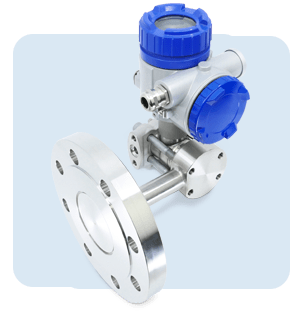
The hydrostatic level sensor is a measuring device used to determine the filling level of a liquid in tanks or vessels. The measuring principle is based on hydrostatic pressure, which is the weight exerted by a liquid as a function of the height of the filling column.
This submersible or hydrostatic pressure sensor can be immersed in a liquid to measure the level in a tank or reservoir. The submergedpressure transmitter is generally fitted with a stainless steel diaphragm.
 Visit industrial pressure transmitters require periodic calibration to ensure industrial metrology throughout their life cycle and avoid factors that influence the accuracy of your sensors.
Visit industrial pressure transmitters require periodic calibration to ensure industrial metrology throughout their life cycle and avoid factors that influence the accuracy of your sensors.
The calibration period is defined by the manufacturers of pressure transmitters. Zero and span calibration is required.
At the factory or at the laboratory, the accuracy is verified at several points in the pressure range to check the linearity of the output signal over the entiere range.
Calibration involves applying a defined reference pressure to the sensor's mechanical interface, checking the 4-20 mA output signal and then applying compensation. The sensor can be calibrated using an external adjusting screw, a programming interface or programming software. For pressure transmitter models with display and pushbuttons, local calibration is possible.
In order to carry out the various manipulations, it may be necessary to have an isolating valve or manifold mounted on the pressure transmitter to isolate it from the process.
For your annual calibrations, you can call on a company specializing in pressure transmitters calibration.
Regularcalibration of pressure transmitter ensures accurate pressure measurement for consistent results.
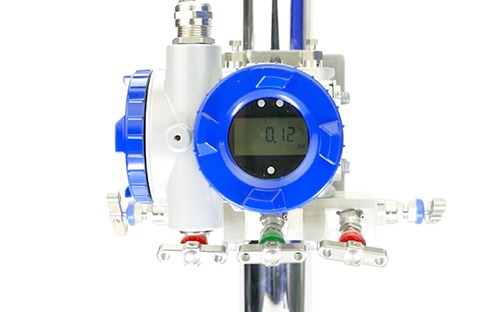
Pressure transmitters can be attached to the Primary Elements for DP Flow or to the pipe where the pressure is to be measured, by means of a mechanical process connection.
Special installation precautions must be taken depending on the process pressure and temperature conditions.
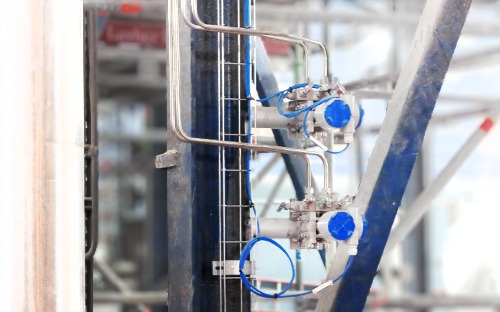
The 4-20 mA output signal of this device can be connected to a display system (an industrial digital display, a recorder, a controller, or a supervision system) or to a PLC (automation system for pressure measurement) in order to control a control device and regulate the pressure of a process.
For your own safety, check the wiring diagram on pressure transmitter before wiring the field instrument.
If you need help, we recommend that you call in a professional company to install and commission your measuring instrument.
 A pressure transmitter 4-20 mA can be tested by applying a defined known pressure to the mechanical interface of the pressure sensor and checking the measured analog output signal. If you have a pressure transmitter with displaycheck the value displayed on the indicator.
A pressure transmitter 4-20 mA can be tested by applying a defined known pressure to the mechanical interface of the pressure sensor and checking the measured analog output signal. If you have a pressure transmitter with displaycheck the value displayed on the indicator.
If your instrument is faulty, you can ask a specialist or one of the manufacturers of industrial sensors to repair it for you.
If repair is not possible, you can replace your old pressure transmitter reference with a new, more modern model.
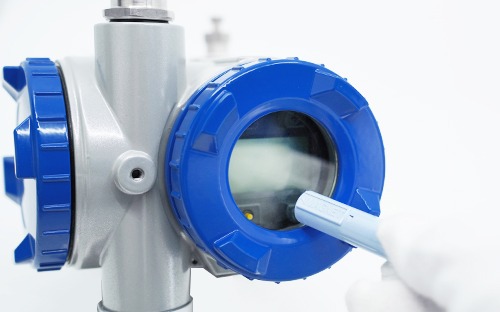
Intelligent digital transmitters with HART protocol can be configured :
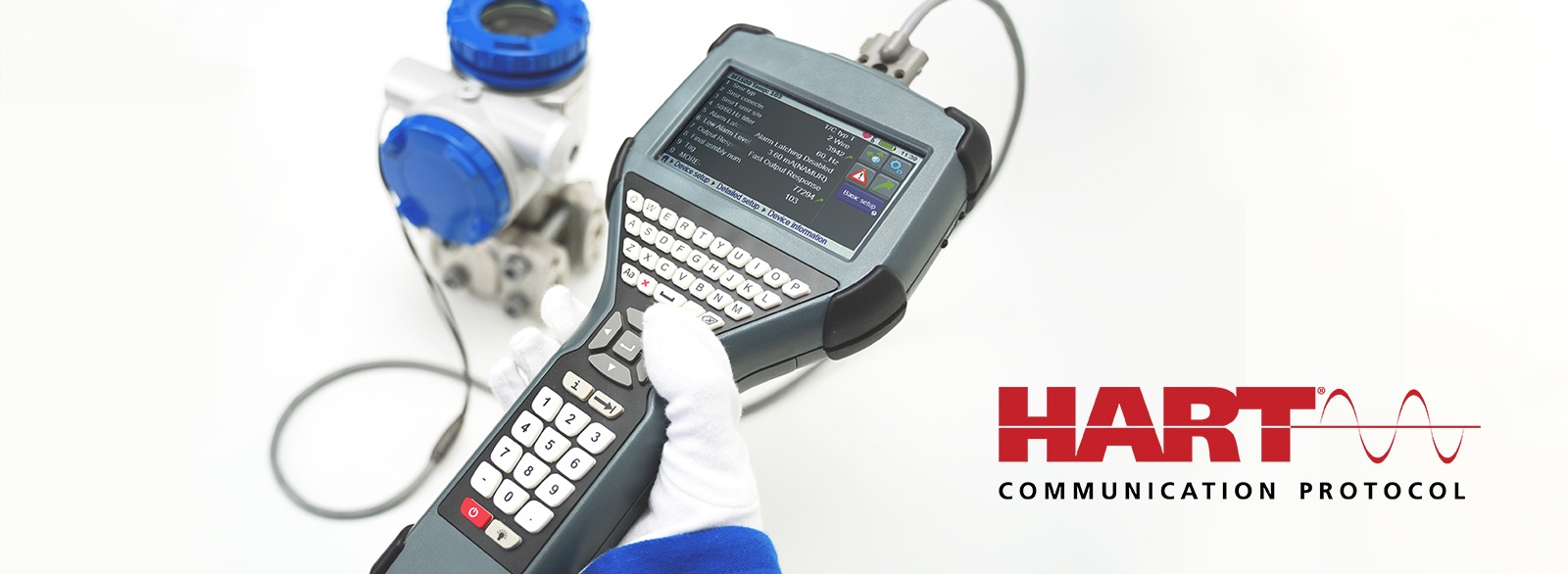
 Understanding why measure pressure in the process industries is important to guarantee safety, optimize process control, improve energy efficiency and maintain the quality of finished products.
Understanding why measure pressure in the process industries is important to guarantee safety, optimize process control, improve energy efficiency and maintain the quality of finished products.
The pressure transmitter is used in many industrial applications.
This digitalpressure transmitter can detect pressures ranging from a few millibars to several hundred bars. It is therefore essential in a wide range of industries for the automation of production lines and machines.
Relative or absolute compressed air pressures, water pressures, steam pressures and gas pressures can all be measured.
Applications include differential pressure measurement of liquid flow, gas flow or vapor flow in a pipe, filter monitoring, liquid level measurement in a tank with a pressure transmitter flush diaphragm, fluid density measurement.
Depending on your industry, you need to choose the right measuring instrument for your application and the constraints of your industrial environment.


 Visit pressure measurement requires call in the professionals in the instrumentation sector.
Visit pressure measurement requires call in the professionals in the instrumentation sector.
The experts at Fuji Electric, the French manufacturer of pressure transmitters industrial pressure gauges, will guide you and offer you pressure transmitters , designed for your most demanding application, to ensure that you get the performance and results you expect, and to avoid errors in your process pressure measurement. So you can enjoy the benefits of pressure transmitter without the drawbacks.
Fuji Electric'spressure transmitters are renowned for their high technology, pressure measurement accuracy, wide measurement range, long-term stability, build quality, reliability, durability, technical support, easy return policy and fast delivery service for customers.
Our related articles

A pressure transmitter is an instrument that detects changes in physical pressure and converts them into an electrical signal.
January 04, 2023

Discover the pressure transmitter Fuji Electric FCX A-IV series: high precision and stability to measure pressure, flow, level and density in your industrial applications.
July 18, 2023

Fuji Electric's pressure transmitters FCX-AIV, SIL 3 certified, combine exceptional quality and reliability. Discover this breakthrough in our measuring instruments.
September 29, 2023

Master pressure units and conversions with our comprehensive guide. Simplify your science and industry calculations with practical tips.
June 30, 2023

Discover how accurate pressure measurement improves the performance, safety and reliability of industrial processes, despite its complexity.
September 25, 2023

Ensure the accuracy of your measurements with efficient calibration of pressure transmitters. Find out how to adjust your instruments to standard references.
September 25, 2023

Learn how to calibrate an absolute pressure transmitter with our step-by-step guide. Ensure accurate measurements and extend the life of your instruments.
May 16, 2024

Discover the 9 crucial questions to ask when choosing the right pressure transmitter : type of measurement, fluid, temperature, scale, connection and environment.
February 24, 2022

Ensure the reliability of your processes by choosing the right pressure transmitter. Discover the 5 key factors for limiting failures in your industrial processes.
November 18, 2022

pressure transmitters analog vs. intelligent pressure transmitters: understand their differences, advantages, limitations and use to make the right choice.
March 29, 2022

pressure transmitters are essential to the industry. Discover the key guidelines for making the right choice and ensuring safety.
February 25, 2022

You want to guarantee the safety of your installation in a potentially explosive area. Do you know the 7 steps for choosing the safest pressure transmitter in hazardous areas?
November 12, 2022